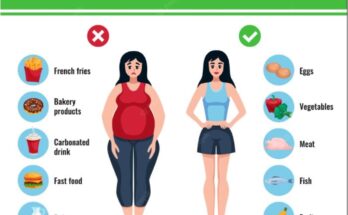A new analysis of genetic material collected from a live animal market in Wuhan in the early weeks of the COVID-19 outbreak strengthens the case that the outbreak originated there when the coronavirus jumped from infected animals to humans, scientists said.
The foundreports the journal Cell, does not identify any infected animal that brought the SARS-CoV-2 virus to the Chinese city of more than 11 million inhabitants. Nor do they provide evidence that the Huanan Seafood market The Wholesale Market was Ground Zero for the outbreak more than 7 million people died.
But the genetic evidence shows that the market meets the conditions necessary to cause an epidemic and makes it even more difficult to explain how the coronavirus could have emerged in a laboratory, farm or even in one of four live animal markets in the city, study authors. said.
“It’s like when the gorilla virus came out in San Diego and it started hitting people who worked at the San Diego Zoo and lived nearby, then it spread much later,” said Michael Worobey, an epidemiologist at the San Diego Zoo. evolution at the University of Arizona who worked on this study. . It wouldn’t be hard to imagine that it might have come from a gorilla in a zoo.
The cause of this epidemic has been hotly debated since its early days. Wuhan is home to a government laboratory where scientists study coronaviruses similar to SARS-CoV-2, a fact that has inspired politicians, national security experts, and late-night talk show hosts. and many scientists – including Worobey – wonder if the virus came out. lab.
Although the argument may be strong, strong evidence to support the leak hypothesis has been lacking. Meanwhile, other facts have emerged that have convinced experienced scientists in the relevant fields that the virus that causes COVID-19 originated in animals, like the viruses that cause SARS, MERS and influenza.
The new results continue that trend, it said Dr. Dominic Dwyera member of the international team that investigated the origin of this epidemic of the World Health Organization.
Dwyer, a medical doctor at the University of Sydney and Westmead Hospital in Australia, said: “You put all these theories of origin, and some of them get stronger as you get more evidence,” said Dwyer, medical doctor at the University of Sydney and Westmead Hospital, Australia, who was not involved in the latter’s work. . “This paper contains a lot of evidence supporting the origin of the animals in the Huanan market.”
The analysis announced on Thursday was based on genetic data collected from hundreds of samples collected in and around the Huanan market by researchers from the China Center for Disease Control and Prevention. Diseases immediately after the market closed on January 1, 2020. found the coronavirus in 74 environmental samples they tested, according to their report last year in the journal Nature.
Worobey and his colleagues dug deeper into that data. Using two distinct genetic sequencing methods, they looked for fragments of SARS-CoV-2 as well as animal and human DNA.
They then projected their findings onto a map of the bustling market, allowing the team to reconstruct how the first few shocks would have played out in a public health emergency. the world.
Of the 585 samples collected in early January 2020, those that contained the coronavirus were concentrated in the southwest part of the market. That was a place where wild animals were kept in pits for sale.
“The market covers several acres, and this is down to one corner of the market, and a few restaurants,” Dwyer said. That corresponds to the origin of the animal. If it came from people wandering around the market, you would find it everywhere.”
The rest of the market “stood up,” the study authors wrote. It had evidence of SARS-CoV-2 in many places: in at least one cart, on a metal plate, on the floor, and on a machine used to remove hair and feathers. The researchers called it “wildlife store A.”
Another 60 samples were taken from the market’s water system at the end of January 2020. Researchers found genetic evidence of the coronavirus in four of them, including one in front of a wildlife store A .
That fluid was still available for SARS-CoV-2 in mid-February. So are two drains from it that could have been contaminated by runoff from wildlife shed A, the researchers wrote.
Samples from the stable that had the coronavirus also contained DNA from a variety of animals, including dogs, rabbits, bamboo rats, Malayan chickens and palm civets. Most of the DNA came from raccoon dogs, and some was found in a nearby trash cart that was found to contain the virus.
The best-known relatives of SARS-CoV-2 are the coronaviruses circulating in horse bats in southern China, Laos and Vietnam and in pangolins from southern China. But no DNA from bats or pangolins turned up in any samples from the Huanan market.
Raccoon dogs, palm-coated civets, bamboo rats and Malayan chickens have previously transmitted bat coronaviruses, the study authors noted. Could they have done that in Wuhan, they wondered?

Security guards stand in front of the closed Huanan Seafood Wholesale market in Wuhan on January 11, 2020.
(Noel Celis/AFP via Getty Images)
It is unclear whether bamboo rats or Malayan chickens can be infected with SARS-CoV-2, the study authors wrote. There is no conclusive evidence that palm civets have contracted the virus, but cells from the animals were susceptible in laboratory tests.
On the other hand, Raccoon dogs are known to catch and transmit SARS-CoV-2. And they were the most numerous animals in the wildlife site A.
The researchers dug into the raccoon dog’s DNA to see if it might have come from southern China, where it may have crossed paths with the bats. They didn’t know, but they managed to avoid contact with raccoon dogs that lived on fur farms in northern China.
Worobey and his colleagues also studied non-SARS-CoV-2 animal viruses found in pet stores to see if they shed light on which animals were infected. where do they come from.
The kobuvirus that infected civets at the Huanan market was closely related to the virus found in animals sold in Sichuan and Guangxi provinces, which are close to the habitat of horse bats and pangolins. And the betacoronavirus that infected bamboo rats had a relative at a bamboo rat farm in Guangxi, one of two southern provinces where market traders were known to have bought animals.
“These findings suggest the movement of infected animals from southern China to Wuhan, a trade route that could have led to the emergence of SARS-CoV-2,” the study authors wrote.
Confirming this will require more intelligence, including work to collect samples from animals in China, said Florence Débarre, an evolutionary biologist at France’s National Institute for Scientific Research in Paris and senior academic writer. Worobey said he plans to continue this line of research.
Dwyer praised the effort to determine where the animals in the market came from — and by extension, how the virus might have gotten to the market.
Second evidence also supports the hypothesis that this epidemic has a so-called zoonotic origin, scientists said.
Among the samples collected from the Huanan market on January 1, 2020, researchers were able to identify four almost complete strains of SARS-CoV-2. One of them was from the so-called A lineage, and the other three were from the closely related B lineage.
Researchers cannot say whether the viruses were shed by animals or humans, but the family A sample came from a stable where an employee sought medical attention in mid-December 2019. Although it was weeks before COVID-19 was identified . as a death, a report from the World Health Organization later described the work as the suspected first patient.
Confirming the presence of both genera in the market allowed the team to compare their genes and trace back to determine when the two species diverged, and where their most recent ancestor was. what does it look like. They came up with six candidates, some of them sound more than others.
There is a 99% chance that one of the four possible candidates was correct, and all four had one important thing in common: they were “similar or they are similar” to the most recent ancestor of the epidemic as a whole, said the study leader. Alexander Crits-Christoph, freelance computational microbiologist.
That’s what they would expect to find if the crisis started in the Huanan market, the study authors said. In this case, the infected animal or animals arrived on the market in November or early December. The virus then spread among the animals that were kept close to the house, as well as among the people who handled them. Those conditions would have given the virus plenty of opportunities it needed to establish itself in humans and begin spreading among its new hosts in a densely populated city.
On the other hand, it is becoming more and more difficult to fit all this evidence into a coherent story with the coronavirus entering China via frozen food from abroad (as the Chinese government has said) or escaping from a laboratory of virology with preventive protocols (as others. members of the US intelligence community have proposed), Dwyer said.
He said: “We have nothing added to support the lab leaks or frozen food theories. “It continues to strengthen the animal and market theory.”
Considering that this outbreak started in a town with a virology lab where scientists study coronaviruses, it’s reasonable to ask if that’s a coincidence and to wonder if the incriminating evidence is being covered up , said DéBarre.
“Many of us were willing to accept the idea,” he said. “But now the data is piling up, and it’s all pointing in the same direction — it’s all pointing to the market.”
He added: “In science you rarely have final answers. “You say, ‘Given all the information we have, this looks like a possible explanation.’
#genetic #research #points #Wuhan #animal #market #origin #COVID #outbreak #study



